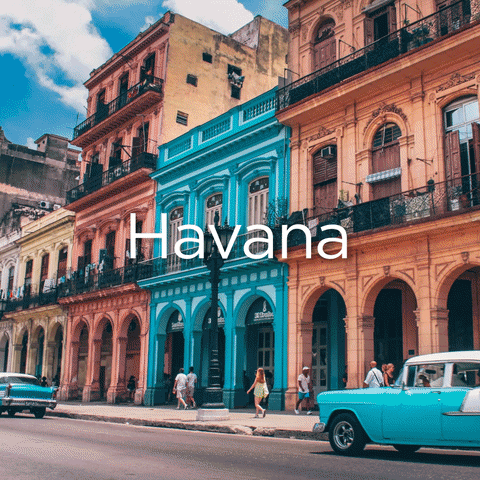Versatility in Caribbean Music: Spanish Speaking Caribbean
Hola!
I hope you have been enjoying this series as much as I have been having fun writing these blog posts for you to indulge.
What we are going to cover next is the Spanish Speaking Caribbean and Cuba is our spotlight country.
Spanish Speaking Caribbean
Spanish Speaking Caribbean, Hispanophone Caribbean, or Spanish West Indies refers to the Spanish-speaking areas such as Cuba, Dominican Republic, and Puerto Rico.
In the year 1492, Christopher Columbus sailed the ocean and all the land he claimed was in the name of the Spanish crown. Columbus’s famous discovery of America in 1492 actually consisted of the ‘discovery’ of Hispaniola, the island that is now split into the Dominican Republic and Haiti. For almost three decades after Colombus’s first voyage, Spanish settlement in the Americas was confined to the Caribbean islands.
Certain points in the Caribbean basin were of considerable importance for much of the colonial period. For example, from the mid-sixteenth century onwards the two annual fleets from Spain stopped at Havana on both the outward and the return journeys, an arrangement that brought enormous prosperity to western Cuba.
Puerto Rico, in contrast, was off the flotilla route between Spain and the New World and so became marginalized. And Santo Domingo, in the Dominican Republic, was initially Spain’s doorway to the Americas but the exhaustion of the Dominican gold deposits, coupled with the discovery of fabulous wealth in Mexico and Peru, soon deflected interest and investment away from the island.
Cuba
Cuba's first habitants were the semi-nomadic Ciboney. They were followed by the Arawak who dominated Cuba at the time of the Spanish discovery and occupation. Some of the words from the language of the Arawak were incorporated into Cuban Spanish.
From 1492 to 1898, the country was a Spanish colony. The country was used as an administrative center for Spanish political and economic control of the region. Most of the population, and economic, and political growth were in the city of Havana. Because of this, the economic growth of the eastern regions was very restrained, and there was less opportunity for this side of the country to progress even in the post-colonial period.
Cuba is one of the largest islands of the Caribbean archipelago, and one of the most influential states in the Caribbean region. Cuba is a multicultural, largely urban nation, although it has only one major city: Havana. Havana is the capital and commercial hub of the country. Havana has a scenic waterfront and is surrounded by beaches that attract numerous visitors from abroad.
While every other Caribbean country that we have covered is unique in its own way and culturally, I think Cuba sets a very high standard that makes it unmatched by other countries. Cuba is home to many types of music and dance which are very closely related to the traditional forms of Cuban music. Some traditional forms include jazz, salsa, classical, and Afro-Cuban styles like rumba, son, Cancion Cubana, danzon, and punto guarjira.
Time and time again, musicians throughout this book have proven themselves to be worthy of their well-deserved accolades and versatility in their desired genres. Damaso Perez Prado or better known as the King of Mambo, not only plays the classical piano but the organ as well. Both instruments require years of practice to perfect. He started off his career playing the organ and pianos in places like cinemas and clubs. Then he moved on to playing for the orchestras. Due to his immense talent, he was recognized by one of the most popular orchestras of his time and was brought on to be their pianist and the arranger. The attached video below shows the greatness and musical genius of the Mambo King.
Cuban cuisine thrives on the same diversity as the culture. The greatest influences on Cuban food are the Spanish, African, and other Caribbean cultures. This flavor mixture is the most precious treasure of Cuba. A single Cuban dish can contain a story and unforgettable flavors. Common ingredients that you will see in a Cuban dish would be rice, beans, and plantains.
In a video uploaded by Best Ever Food Review Show, the hosts take us on a tour around Cuba. During every stop they made on their tour, they tried an array of Cuban street foods. The selection definitely shows that Cuba is not lacking in the diversity of cuisine.
Until our paths cross again!
💓
References:
Gangelhoff, C., & LeGrand, C. (2020). Tour de Force: A Musical Journey of the Caribbean (1st ed.). Sound Caribbean.
Cuban STREET FOOD in Havana!!! We Hit the JACKPOT!! (2020, February 19). [Video]. YouTube. https://www.youtube.com/watch?v=81CjGafFVH0&t=15s
DAMASO PEREZ PRADO MAMBO No 8 (HD). (2012, June 21). [Video]. YouTube. https://www.youtube.com/watch?v=E3v3eRhcu08
Béhague, G., & Moore, R. (2001). Cuba, Republic of. Oxford Music Online. https://doi.org/10.1093/gmo/9781561592630.article.06926



Comments
Post a Comment